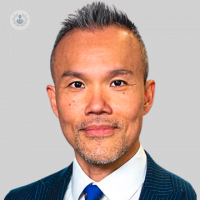Neurorehabilitation following a stroke: Navigating the road to recovery
Autore:After experiencing a stroke, the journey to recovery often involves a comprehensive approach known as neurorehabilitation, a process that aims to help stroke survivors regain lost skills and adapt to new challenges brought on by the brain injury.
Here, Dr Joseph Kwan, leading consultant in stroke medicine, neurorehabilitation, internal medicine, and gerontology at the renowned Cleveland Clinic London Rehabilitation Unit, delves into the process of neurorehabilitation following a stroke, the common techniques and therapies, as well as how the rehabilitation plan is adjusted throughout the recovery journey.

What is the process for neurorehabilitation following a stroke?
Neurorehabilitation typically begins as soon as the patient's medical condition stabilises, often within days after the stroke. Early intervention is crucial to maximise the brain's plasticity (ability to adapt) and resilience, promoting healing and better outcomes in the long run.
The process for neurorehabilitation usually starts with a thorough assessment conducted by a multidisciplinary team of healthcare professionals, including specialists in neurorehabilitation, neurologists, speech and language therapists, and psychologists.
How do you assess the specific needs of a patient before designing a neurorehabilitation plan?
Assessing the specific needs and abilities of the patient is a critical step to gain a comprehensive understanding of the patient’s strengths, challenges, and goals. The assessment process typically involves:
- Medical history: The process begins by gathering information about the patient’s medical history, including details about the stroke (type, location, and severity) and any pre-existing health conditions. A physical examination is then conducted to assess strength, sensation, coordination, balance, and range of motion.
- Cognitive and functional assessments: Cognitive assessments are conducted to evaluate the patient’s cognitive function, including memory, attention, and problem-solving skills. Functional assessments are used to evaluate the patient’s ability to perform activities of daily living independently. This may include tasks such as dressing, eating, and walking.
- Speech and language assessments: Speech and language assessments are performed to assess speech production, language comprehension, reading, writing, and swallowing abilities.
- Psychosocial assessment: A psychosocial assessment is conducted to evaluate the patient’s emotional wellbeing, mental health, and social support system. Identifying psychosocial factors such as depression, anxiety, stress, or social isolation is important to develop a holistic rehabilitation plan that addresses the patient’s emotional and social needs.
This information serves as the foundation for designing a neurorehabilitation plan tailored to the patient’s specific needs.
What are the primary goals of neurorehabilitation following a stroke?
The primary goals of neurorehabilitation following a stroke encompass a multidimensional approach aimed at supporting recovery, maximising functional independence, and enhancing overall quality of life.
What techniques or therapies are commonly used in neurorehabilitation following a stroke?
Neurorehabilitation following a stroke utilises a variety of techniques and therapies aimed at enhancing recovery and improving functional outcomes. Some common approaches include:
- Physical therapy: Exercises and activities to improve mobility, strength, balance, and coordination.
- Cognitive rehabilitation: Exercises and strategies to address memory problems and executive dysfunction.
- Occupational therapy: Strategies to enhance independence in activities of daily living, such as dressing, cooking, and bathing.
- Speech and language therapy: Techniques to improve speech, language, swallowing, and cognitive-communication skills.
- Psychological counselling: Supportive counselling and therapy to address emotional and psychological factors, including adjustment to disability.
How do you track progress and adjust the rehabilitation plan as needed throughout the recovery process?
Progress in neurorehabilitation following a stroke is closely monitored throughout the recovery process to ensure that the rehabilitation plan remains effective and relevant to the patient's changing needs. This involves regular assessments, goal setting, and adjustments to the treatment plan as necessary. Common methods for tracking progress include:
- Objective measures: Assessment tools and standardised tests to evaluate physical, cognitive, and functional abilities at regular intervals.
- Functional goals: Setting specific, measurable, achievable, relevant, and time-bound (SMART) goals to track progress in activities of daily living and functional independence.
- Feedback and communication: Regular communication between the patient, the patient’s family, and the neurorehabilitation team to discuss progress, address concerns, and modify the rehabilitation plan accordingly.
- Reassessment: Periodic reassessment of the patient's goals, needs, and priorities to ensure that the rehabilitation plan evolves in response to changes in the patient's condition or circumstances.
To schedule an appointment with Dr Joseph Kwan, head on over to his Top Doctors profile today.


